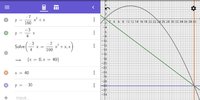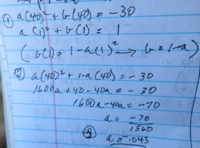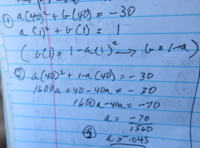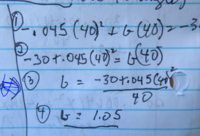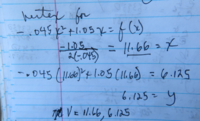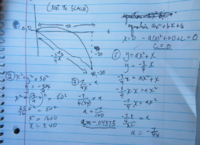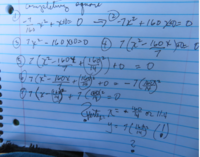allegansveritatem
Full Member
- Joined
- Jan 10, 2018
- Messages
- 962
I think I have pretty much done what you point to here, no?"g" is standard notation for the downward acceleration due to gravity and "sx" and "sy" are standard notation for x and y coordinates of position. However, this problem is giving you a different notation so you don't want to use those. In this problem the position of the ball is given by x and y and the acceleration is incorporated into "a".
In this problem, you are told that "using Calculus it can be shown that the path of the ball is given by y= ax^2+ x+ c for some constants a and c". So I take it you have not yet taken Calculus and are not expected to derive that. Since "real life" problems do not have a coordinate system attached you do need to select one. It is standard practice to have the x-axis horizontal and the y-axis vertical and the equation "y= ax^2+ x+ c" is assuming that. You do have to decide where to put the origin of the coordinate system. I see two points where it would be reasonable to set the origin- at the initial point of the trajectory or and the end point. Choosing that initial point as the origin, x= 0 and y= 0 we must have y= 0= a(0^2)+ b(0)+c= c. So now we know the equation is y= ax^2+ x. The end point is 50 m down the hill which has a "slope of -3/4". The slope (not quite Calculus) is "y/x= -3/4" so y= -3x/4. Using the Pythagorean formula, x^2+ y^2= x^2+(3/4)^2x^2=(1+9/16)x^2= (25/16)x^2= 50^2 so x^2= (50^2)(16/25)= (2)(50)(16)=(4)(25)(16). Taking the square root of both sides, x= (2)(5)(4)= 40. y=-3x/4= -30. In coordinate system with origin at the starting point the end point has coordinates x= 40, y= -30. Putting those into y= ax^2+ x, -30=a(40)^2+ 40. -70= 1600a so a= -7/160.

